Marcus Westberg
In Malawi, 263 elephants have been relocated from Liwonde National Park to Kasungu National Park. It is one of the largest reining operations ever carried out in Africa. But why and how do you rein in a herd of elephants?
The elephants are spread out on the ground. A family of ten pachyderms have just been stunned. Everything has to happen quickly, every move has to be right, because the elephants can only be stored on the side for a short time. Otherwise their own weight will crush their organs. Around 30 people work carefully and concentrated around them so that the animals can be loaded onto the transporter unharmed.
The reasons for such resettlement are varied and complex. At present, the elephant population in Liwonde National Park is relatively high. But that’s not the only reason why the herds have too little living space. It is the people who make this the most controversial for them, as more and more people live around the national park.
In order to prevent possible conflicts between humans and animals, the responsible authorities decided to transport a large number of animals to Kasungu National Park, 350 kilometers away, and to relocate them to a reserve where animal and species diversity is lower. In addition to the 263 elephants, 431 other animals – including impala, water buffalo, sable and waterbuck – were reined in.
The restocking of Kasungu National Park will not only establish another viable elephant population in the country, but also promote biodiversity. This in turn promotes tourism and creates new jobs.
The helicopter as shepherd
But how does such a rein action actually work? The young Swiss photographer Jonas Strahberger, who currently lives and works in Malawi, documented the action together with his colleague Marcus Westberg and tells us in detail about the move: “First, a helicopter is used to search for a herd of elephants. If it is found, the helicopter flies relatively low to the animals in order to drive them to an open, non-wooded area. Due to the stress that the helicopter causes in the animals, the herd is divided into individual families. This is enormously important because only entire families can be reined in. The stress and trauma would be too great for separated family members, as it is for us humans.”
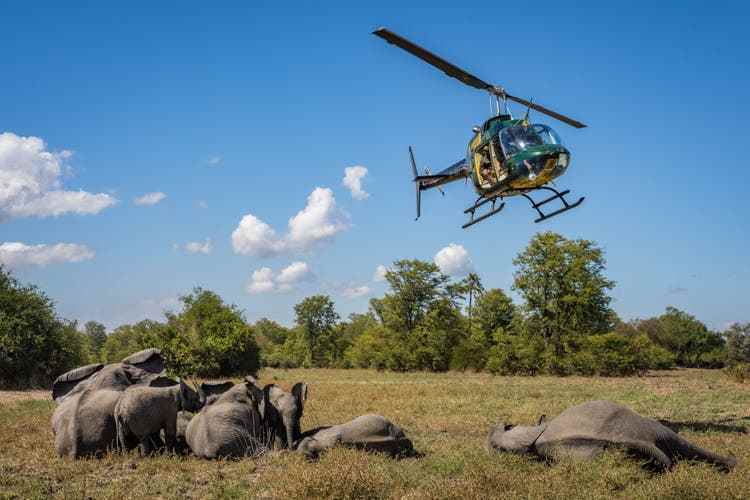
After the elephants have been herded into an open area, they are stunned from the helicopter.
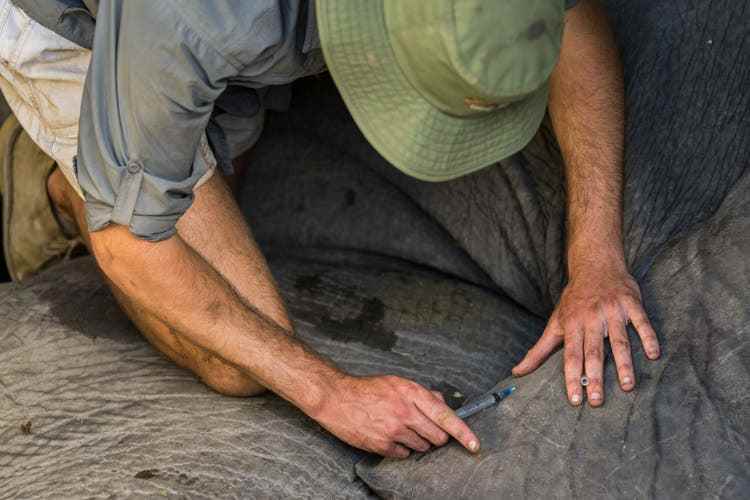
A blood sample is taken from the ear of each elephant during the move,
Once the elephants are visibly separated into their families, they are stunned from the helicopter. First the veterinarians put the oldest elephants out of action, then the young ones. Once all the animals have been stunned on the ground, the ground team’s work begins.
Nooses are tied around the feet of the elephants. At these, the animals are hoisted into large trucks with cranes after the researchers have taken blood and DNA samples and measured each animal. This is a unique opportunity for the research team to collect such data. Furthermore, some of the pachyderms are equipped with satellite transmitters in order to be able to follow the routes of the herds. This is to prevent elephants from migrating to civilized areas and damaging crops there.
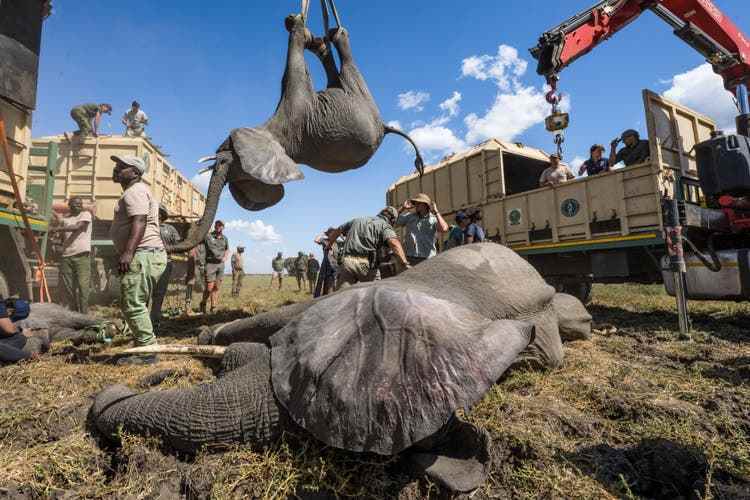
The elephants are loaded into the transport boxes.
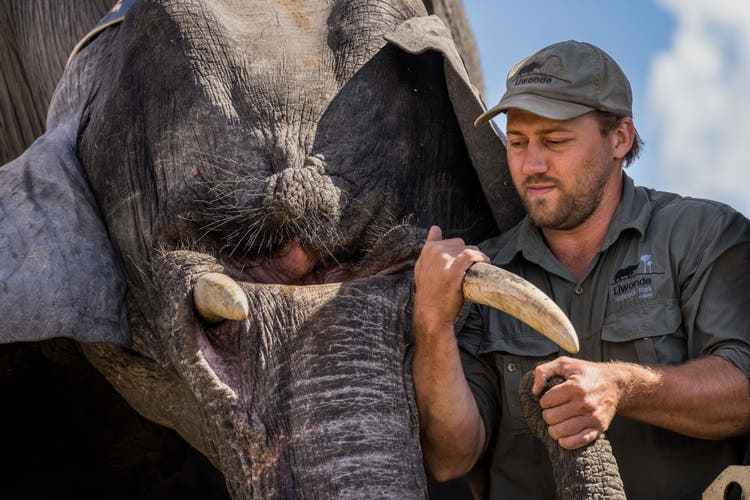
Adult elephants weigh between three and six tons.
«Each family is loaded into a truck. There, too, there must be no separation under any circumstances, because the animals are no longer stunned during the journey, but awake,” explains Strahberger. “Three to ten elephants can stand next to each other in a transporter. They support each other during the journey.”
The transporter needs about 12 hours for the 350 kilometers from Liwonde to Kasungu National Park. Driving is through the night, because then there is less traffic. More elephants will be fetched within the next 24 hours. Up to 24 animals can be caught and relocated per day.
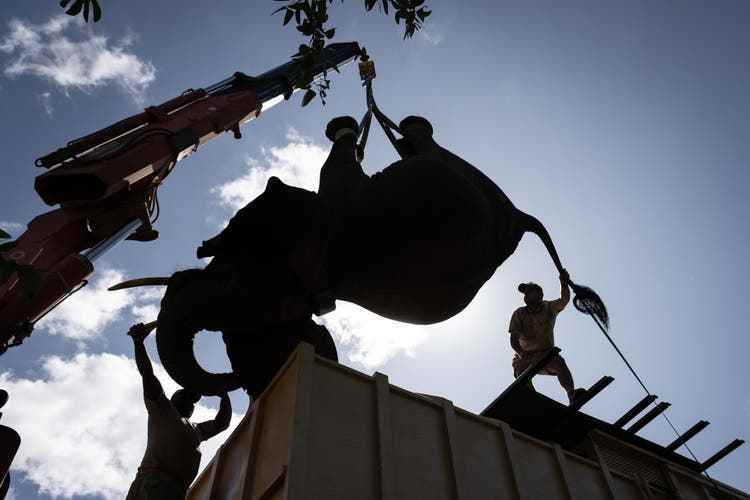
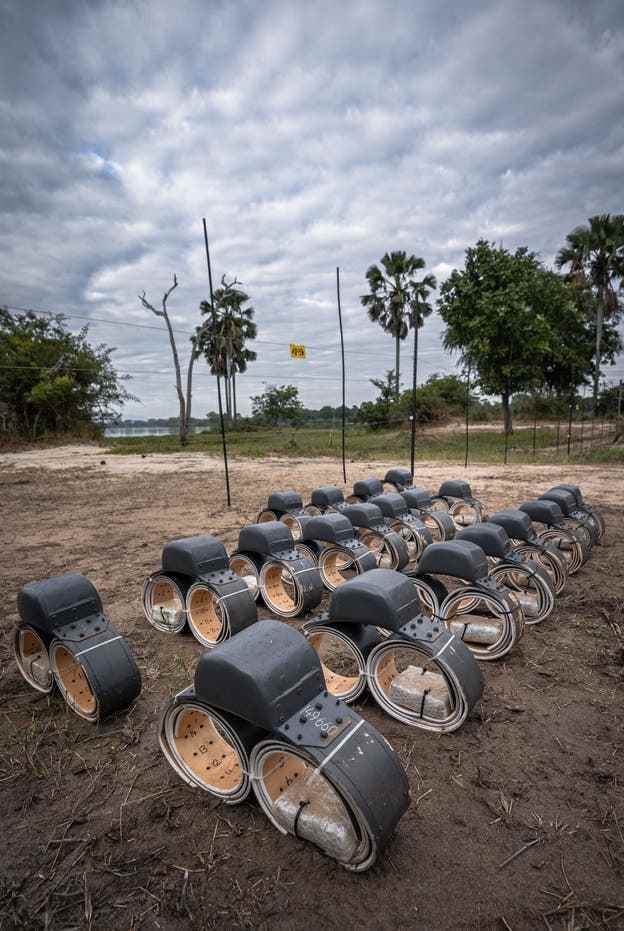
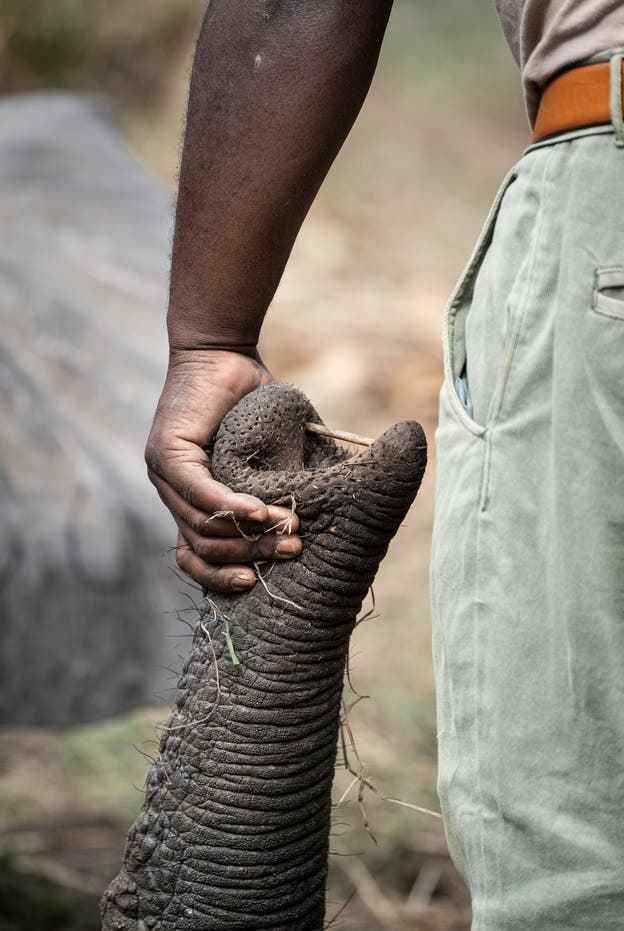
An elephant’s trunk has 40,000 muscles, but its nostrils have to be held open with a small stick during stunning because elephants cannot breathe through their mouths. On the left you can see the transmitters that are attached to the animals.
For Jonas Strahberger, the whole thing was an unbelievable experience: “Suddenly they are lying there in front of you, stunned, the largest land mammals on earth. And for once you can be very close to an elephant, touch its skin, its trunk, its tusks, its feet.»
But Strahberger also saw the dangers that such relocations entail for the animals: “It was a very dangerous and emotional moment when a mother elephant fell on her young immediately after being anaesthetized. It is a natural reaction of animals to stand close to each other in stressful situations. The whole team, including the children of the employees who were present, and us photographers immediately ran to help. Together we then tried to lift the colossus to get the baby out. We managed to save the little one from suffocation. When both elephants woke up after the drama, it was an incredibly emotional moment for the animals and for us humans.”
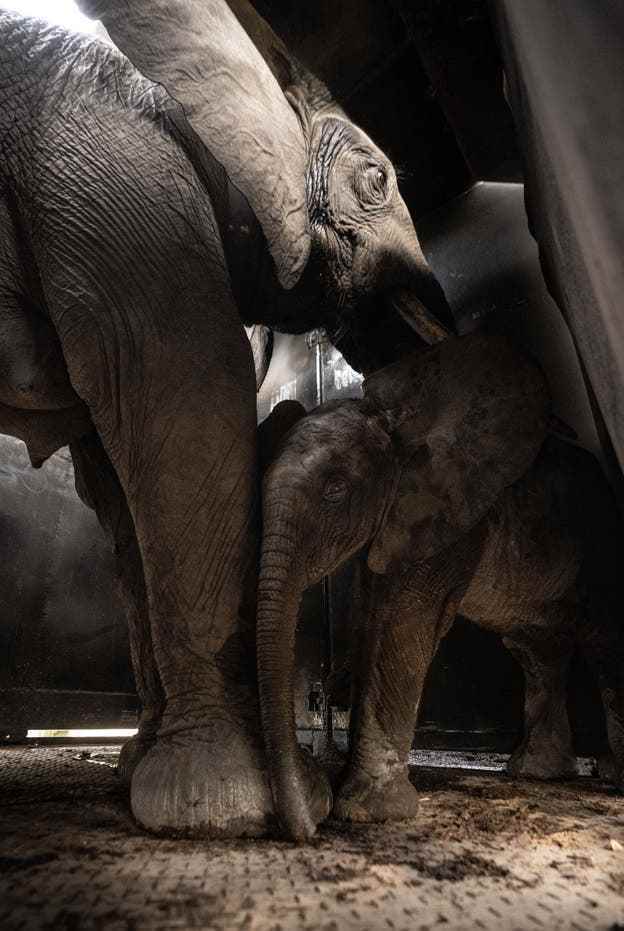
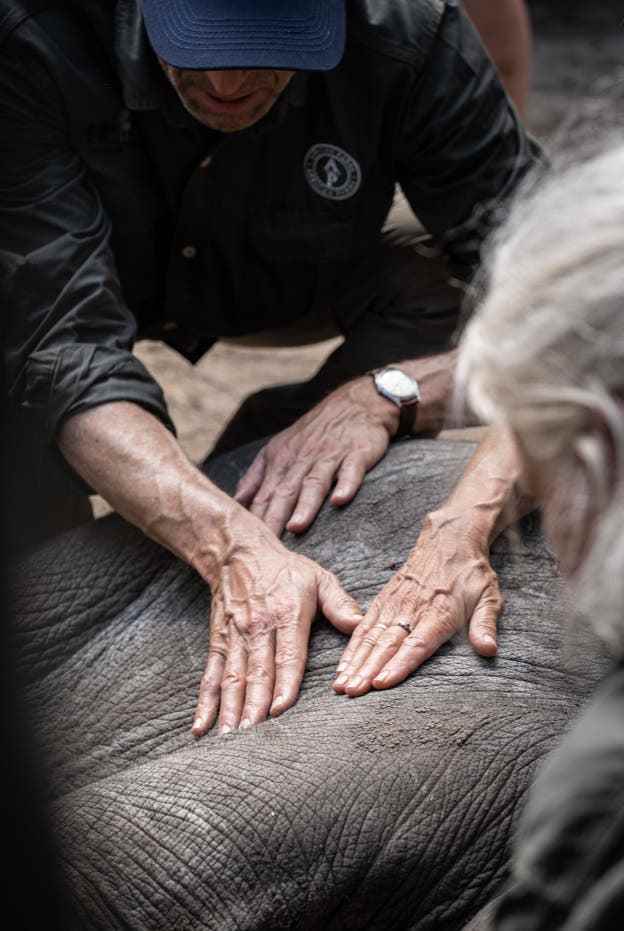
The mother elephant and her cub in the transport box after they survived the delicate situation unharmed thanks to the immediate intervention of the helpers.
A completely unsuccessful reining operation in 2018 showed that such actions are incredibly sensitive and put an enormous strain on the animals. At that time, 11 rare black rhinos died in Kenya from stress, dehydration and salt poisoning at the new location. After an official investigation, it also became known that the teams responsible on site had worked unprofessionally and communicated poorly with each other. Luckily everything went well this time and the elephants are exploring their new home.
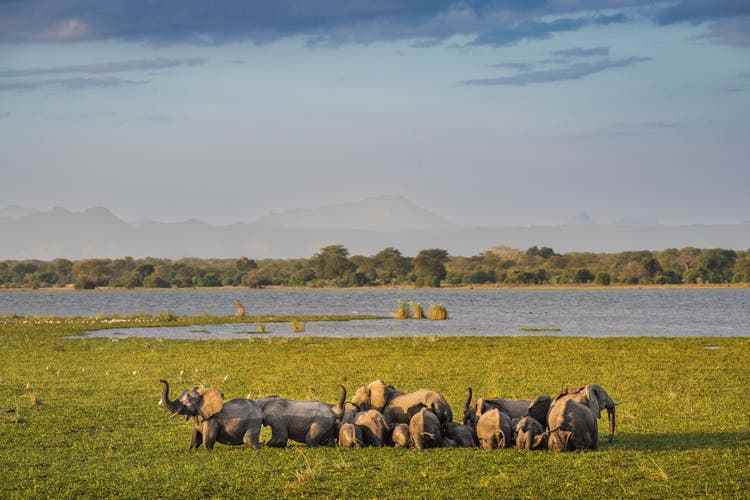
The relocated herd in their new home in Liwonde National Park
Collect millions with animal photos
Successful relocations only succeed when absolute professionals are at work. Logistically and technically, everything has to be meticulously planned, and such campaigns are correspondingly expensive and time-consuming.
When the corona pandemic was in full swing in 2020 and global tourism collapsed completely and essential financial contributions for the preservation and protection of the national reserves in Africa and their animal population were completely eliminated, the Austrian photographer Marion Payr and the Dutch photographer Pie decided Aerts to jointly launch a fundraiser for conservation and the continuation of important wildlife conservation projects.
100 of the best animal photographers worldwide were then contacted, each of whom made one of their pictures available for the collection campaign. For 100 US dollars you could use the Prints for Wildlife website order a fine art print of these same photos and thus support the projects of African Park Networks.
The campaign was so successful that the Prints for Wildlife collection is now taking place for the third time.
About African Parks Network
African Parks is a non-profit conservation organization that takes full responsibility for the restoration and long-term management of national parks in partnership with governments and local communities. Since 2000, African Parks has managed 22 national parks and protected areas in Angola, Benin, Central African Republic, Chad, Democratic Republic of Congo, Republic of Congo, Malawi, Mozambique, Rwanda, Zambia and Zimbabwe totaling over 17 million hectares.
